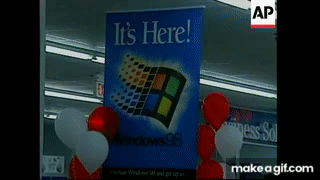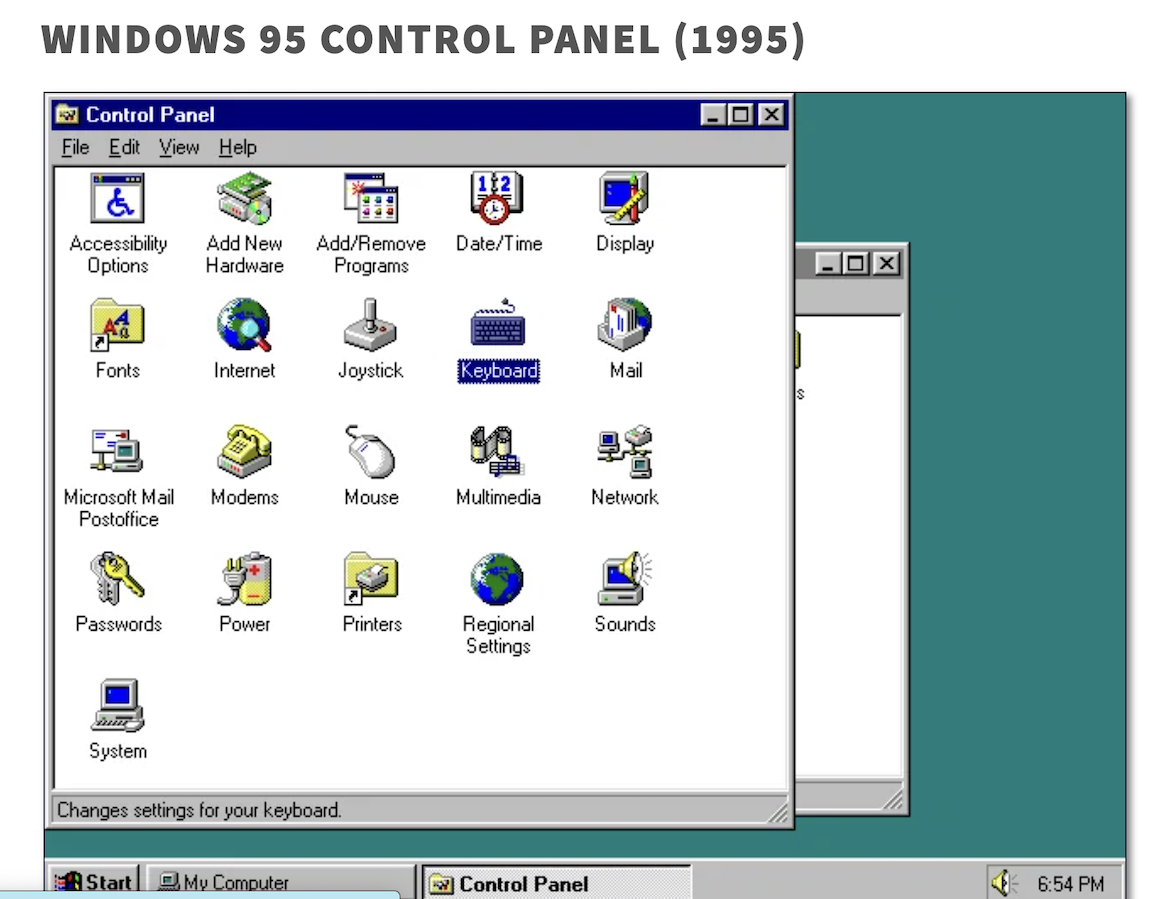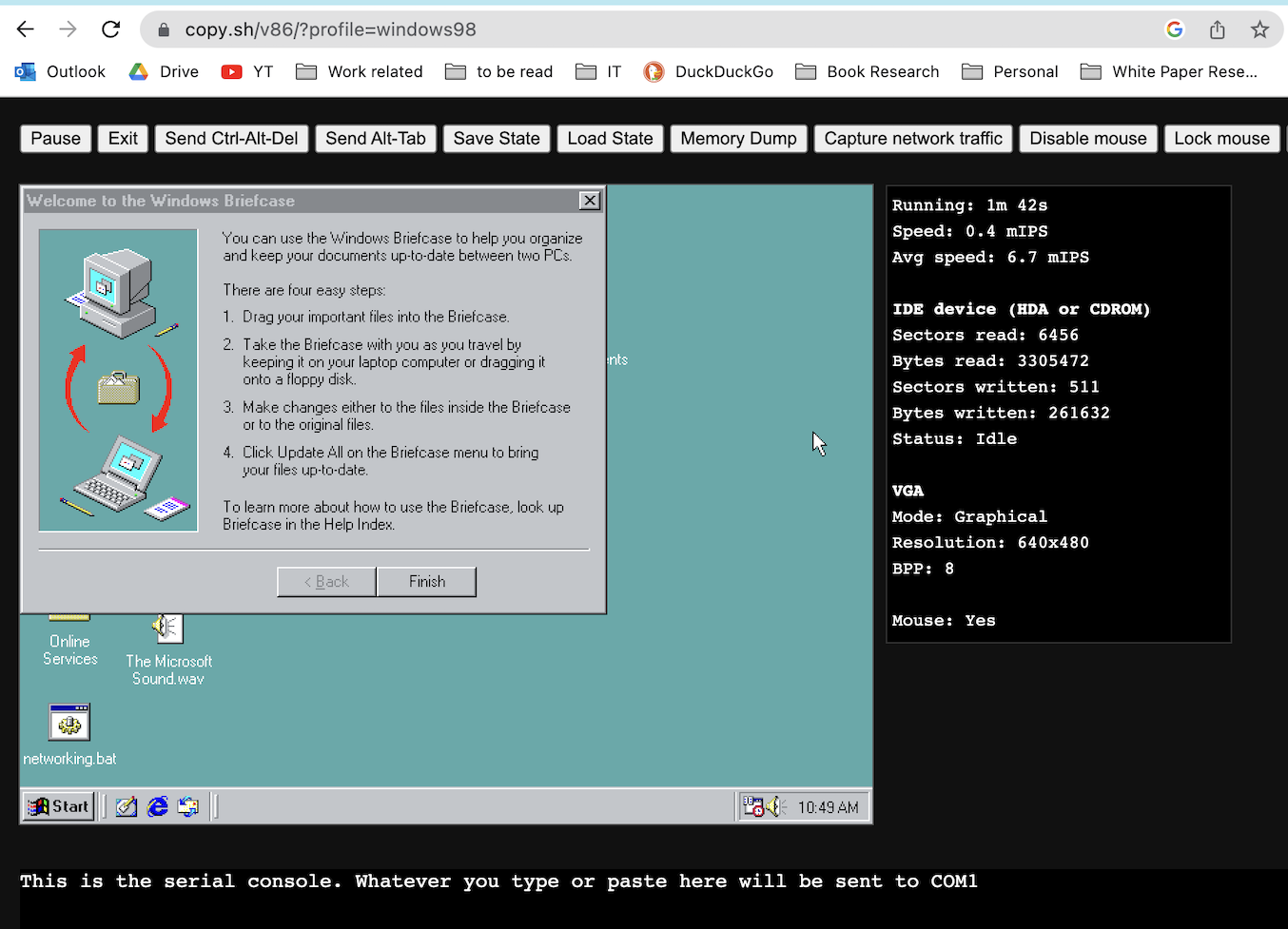23 Jan 2023 - by: Darkwraith Covenant
Aesthetic
I wanted to design the DWC webpage based on the design principles found in 1990s era operating systems like Microsoft’s Windows 95 and 98. I was also inspired by the underground tech/geek/hacker scene of the past and present. I love the minimalist, early internet designs that many in the underground maker/hacker scene still use, invoked by the angelfire/geocities era.
The aim was for this website to evoke a time where screen resolutions and colors were quite limiting, and where these limitations could engender inspiration and creativty. Microsoft was beginning to set themselves aside as the corporate friendly brand compared to Apple’s academic, artist and musician friendly platform.
My Background
One of my first IT jobs was installing Windows 98 from a CD-ROM at a family member’s workplace, which happened to be a law office. I think this was technically illegal (dear lawyers, never change), but back then I imagine many were either ignorant of things such as “licensing,” or they simply didn’t care. As a teenager fresh out of high school, I was cheaper than hiring a consultant.

I don’t even think they ever paid me for the job, which was to simply install windows 98 on several computers with one CD-Key. This was before Volume Licensing and online activations. They simply trusted that you couldn’t just get a key. (You could get a key). The stodgy corpos in the “business community” had adopted computers in the workplace early on, conjuring visions of 1980s films filled with confused men working in cubicles typing on big chunky keyboards, staring at amber monochrome CRTs.
But by this time we were far past that reality, light years ahead in comparison to the Amiga, the Commodore, or the Atari ST.
In the late 1990s the World Wide Web was exploding exponentially, and Windows started to reflect the magnitude of this explosion by incorporating Internet Explorer directly into the GUI. This decision would irritate users who liked Win95’s simplicity and smaller size. The biggest sticking point was the $80 pricetag for Win98, which many could not justify for an upgrade that ostensibly didn’t look very different. In fact, Internet Explorer was actually a paid add-on for Win95! This shotgun wedding between IE and the Windows environment is still visible in Windows 10/11’s Explorer.exe today, with its browser-esque navigation interface that revolutionized the way we read/write/access files.
Despite the explosion’s fiery tendrils starting to mushroom in the US, Microsoft was not nearly the international juggernaut they are today. They had all but cornered the web browser market by default, since IE came with every computer loaded with Win98. This explosive hellfire rained down onto the Netscape offices, (RIP Netscape 🪦) , leading to an infamous anti-trust lawsuit in 1998. It is estimated that Windows 98 sold 58 million licenses, which is nowhere near the 1.4 billion devices currently running Windows 10 and Windows 11. That’s a 2313.79% increase!
Inspiration
I started out by looking at designs from the era in the version museum,, a website which showcases HQ images of a number of old designs from popular websites, applications, games, and operating systems. I looked at Classic Mac OS designs, but these had a much different vibe that I felt didn’t really reflect the stiff, biz-friendly philosophy of Microsoft in 1998. Apple may have had an objectively more artist friendly design and graphical fidelity, but in my opinion Apple wouldn’t really come into their own design-wise until the 2000s, after Steve Jobs took over the company he’d once lost, sending them on the skeuomorphic aesthetic which would come to define the post y2k era.

Not quite satisfied with the Version Museum’s offerings, I looked up browser based virtual OSes. I came across the website copy.sh/v86, which has a number of early x86 operating systems that you can play with. It’s pretty amazing that we’ve reached a point where you can run Windows 98 in a browser window on basically any computer. That used to take your entire computer’s hardware dedicated to the one task (or rather multiple tasks to bring you sound, video, applications, etc.) of presenting you with a complex Operating System made up of millions of lines of code, but here it runs right in your browser.
Upon launching an emulation of Windows 95, I was immediately flooded with intense memories. That startup sound is pure bliss. However, things didn’t feel quite there yet with Win95. It felt pretty rudimentary and unfinished to me. Admittedly, this is probably because Win98 would set the standard of how Microsoft would design OSes going forward, carrying many of these functions over into the modern era. Win95 crawled so Windows 98 could walk aka encourage you to get hacked in the newly minted wild west of the late 1990s internet.
This is what the virtual environment looks like. There are a number of cool features like save states in case you want to cheat at minesweeper. I poked around the built-in software in Win98 for inspiration on how to design this website.

This was very promising, and we’ll dive deeper into how and why this aesthetic is so simple yet inspiring.
 Design Approach Pt. I
Design Approach Pt. I



